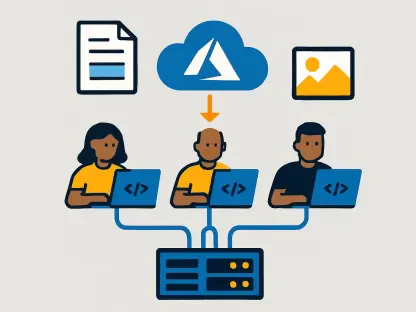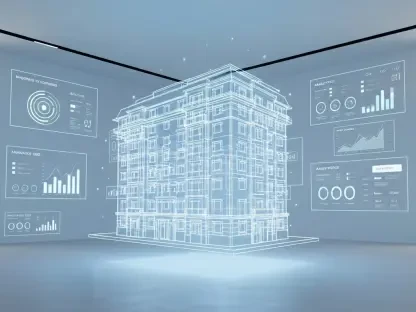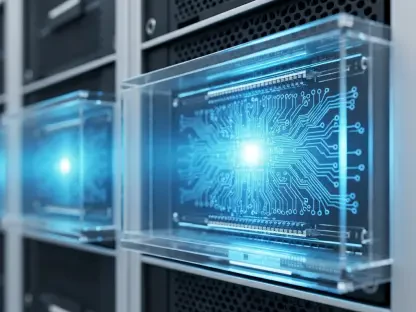The accelerating growth of artificial intelligence (AI) technologies has ushered in an era where robust and reliable cloud infrastructure is indispensable for driving AI-based solutions. With an explosion in the deployment of AI-related hardware, cloud service providers are grappling with the challenge of ensuring sustained hardware efficiency and dependability. The rapid pace at which AI models are being developed and deployed necessitates a comprehensive strategy to manage, maintain, and diagnose the multitude of servers housed within global cloud data centers. This has brought cloud hardware diagnostics to the forefront of discussions as a pivotal element in the continued success of AI implementations. Cloud providers, such as Azure, AWS, and GCP, are increasingly tasked with accommodating the extensive computing requirements of AI applications, which are distinct from the needs of traditional computing workloads. AI applications rely heavily on GPU, TPU, and NPU-based servers that offer the parallel processing prowess required for machine learning tasks. Given the competitive cloud ecosystem, service providers are now exploring internal solutions to hardware diagnostics. They aim for efficiencies that offer independence from external hardware maintenance agreements, highlighting a decisive shift toward an in-house approach to server management. This evolution not only enhances the providers’ ability to control server reliability but also reduces the operational complexities and unpredictability associated with third-party service dependencies.
Specialized Hardware Requirements and Market Shifts
AI workloads demand significant computational power, often involving hardware specifically engineered for handling large volumes of data across multiple nodes simultaneously. GPUs, TPUs, and NPUs form the backbone of these infrastructures, as they are tailored to handle the complex calculations inherent in AI algorithms. The distinction between these AI-dedicated hardware components and traditional servers lies in their capacity to process vast parallel data streams efficiently. The operational ecosystem within data centers is gradually evolving from the longstanding reliance on OEM-managed hardware. Traditional service models are being revised as cloud providers move toward a model characterized by self-sufficiency in server maintenance and diagnostics. This transition is not merely a logistical pivot; it represents a groundbreaking step toward creating a robust internal framework that minimizes reliance on external vendors for hardware performance insights and issue resolutions.
The determination to employ OEM services historically stemmed from the advantages of using established systems that offered a semblance of hardware performance assurance through service-level agreements (SLAs). However, innovations and scale demands in the AI domain have exposed the inflexibility and costliness associated with these arrangements. Providers are increasingly prioritizing self-diagnosis capabilities that offer fast, effective, and targeted remedial actions. The capability to diagnose issues internally propels their commitment to customer satisfaction by circumventing potential service disruptions and fostering a higher degree of hardware availability. The evolution toward a Make model underscores a strategic maneuver, reflecting a paradigm where self-management is not only feasible but also strategically advantageous.
Infrastructure Diagnostic Pathways
The infrastructure necessary for diagnosing cloud hardware explicitly adapted for AI workloads is composed of multiple layers, each integral to ensuring optimal performance. The framework starts with the Telemetry Collection Layer, a foundational stratum tasked with aggregating real-time data points from distinct hardware components. This encompasses information such as GPU driver statuses, firmware updates, error logs, temperature readings, and system utilization levels. The data serves as a holistic blueprint, enabling the formulation of conclusive analyses that are essential for proactive hardware management. These insights are collected through cloud-based agents, which meticulously compile telemetry into central databases for expedited processing and action.
In parallel, the Hardware Risk Scoring Layer functions to meticulously quantify prospective failure risks by assessing error patterns and performance variances from usual parameters. This layer evaluates factors like correction code errors, thermal capacities, GPU performance anomalies, and firmware discrepancies. The diagnostic insights derived here play a quintessential role in identifying imminent hardware threats, thereby equipping service teams with the knowledge to preemptively address and avert failures. Readiness and accuracy at this stage are pivotal for supporting uninterrupted AI operational frameworks, underpinning the industry’s steady transition toward predictive maintenance models. This proactivity assures potential disruptions are addressed ahead of actual impact, reinforcing the integrity of AI processes.
The Role of Prediction, Mitigation, and Remediation
Subsequent to the quantification of risks, the Prediction, Mitigation, and Remediation Layer employs previously yielded telemetry data alongside machine learning algorithms to forecast imminent hardware faults. This process facilitates early intervention, preventing the escalation of potential issues into serious disruptions. The prediction mechanism operates in a LIVE server state, accommodating active workloads to ensure no service lapses occur. Upon reaching the remedial phase, the malfunctioning hardware is assessed in an offline environment. This careful evaluation scrutinizes the origins of errors, enabling targeted and efficient repair actions that restore optimal functionality.
Comprehensively, a diagnostic reporting dashboard complements the underscores of these analytical layers, presenting health metrics of the entire hardware fleet. This includes a visualization of failure trends across different hardware models, heatmaps of thermal anomalies, and insights into hardware impact on AI models. Such thorough diagnostic frameworks empower cloud service providers by providing a panoramic overview of system health, thus promoting informed decision-making. The invaluable advantage stems from the ability to anticipate model degradations, ensuring the efficacy and uptime of AI services. Ensuring the hardware’s resiliency is vitally important for service providers to differentiate themselves in a saturated market.
Future Implications of In-House Diagnostics
The rapid advancement of artificial intelligence (AI) technologies marks a new era where dependable cloud infrastructure is essential for supporting AI solutions. As AI hardware deployment skyrockets, cloud service providers face the challenge of maintaining efficient and reliable hardware performance. The swift development and deployment of AI models require a robust strategy for managing and diagnosing the numerous servers housed in global cloud data centers. Consequently, cloud hardware diagnostics has become a crucial topic for the continued success of AI endeavors. Providers like Azure, AWS, and GCP are under pressure to meet the unique computing demands of AI applications, which differ significantly from traditional computing workloads. These AI applications depend heavily on GPU, TPU, and NPU-based servers that offer the necessary parallel processing capabilities for machine learning tasks. Within the competitive cloud ecosystem, service providers are investing in in-house hardware diagnostics solutions. This approach enhances their ability to manage server reliability while reducing dependencies on third-party service agreements.









